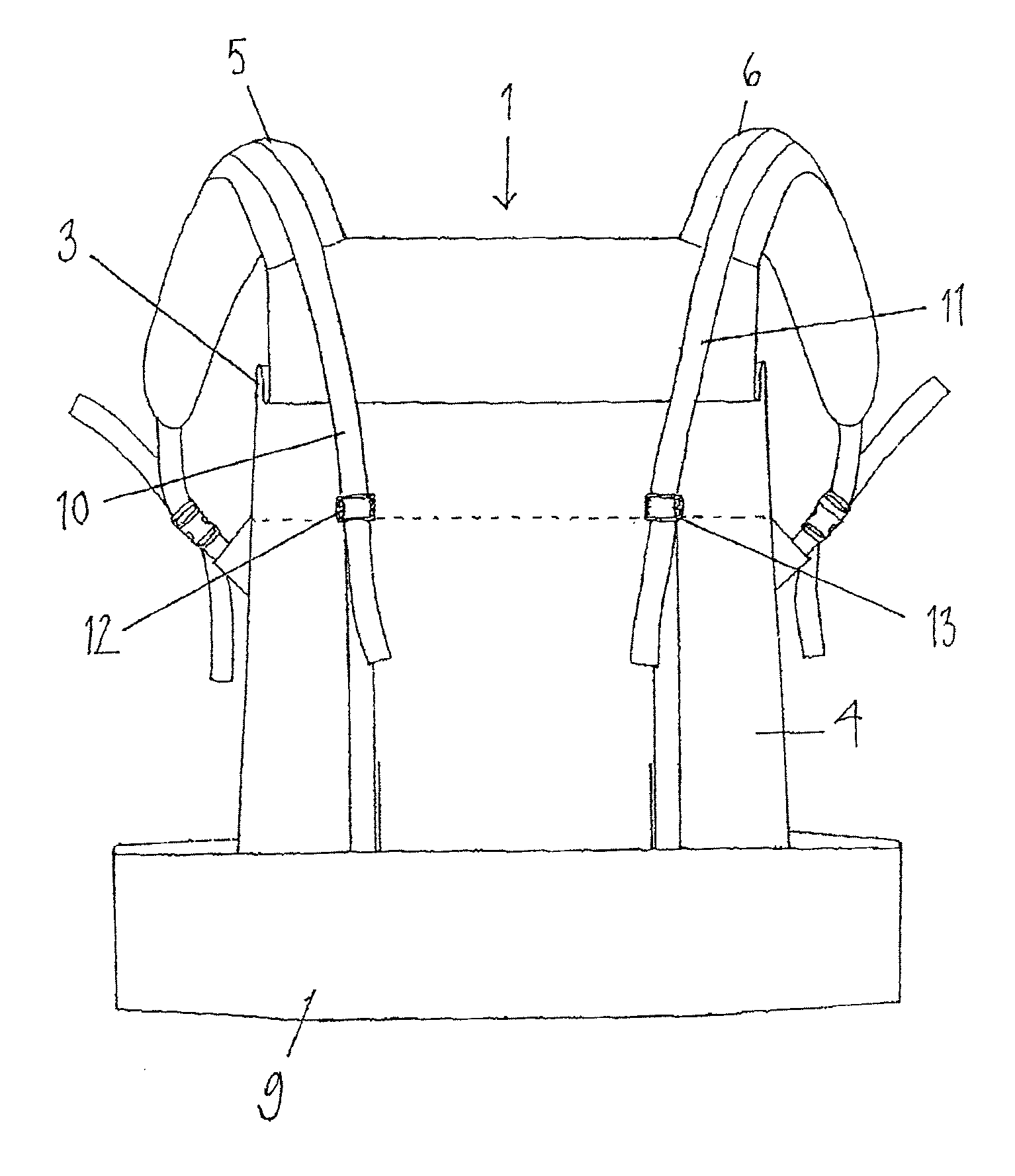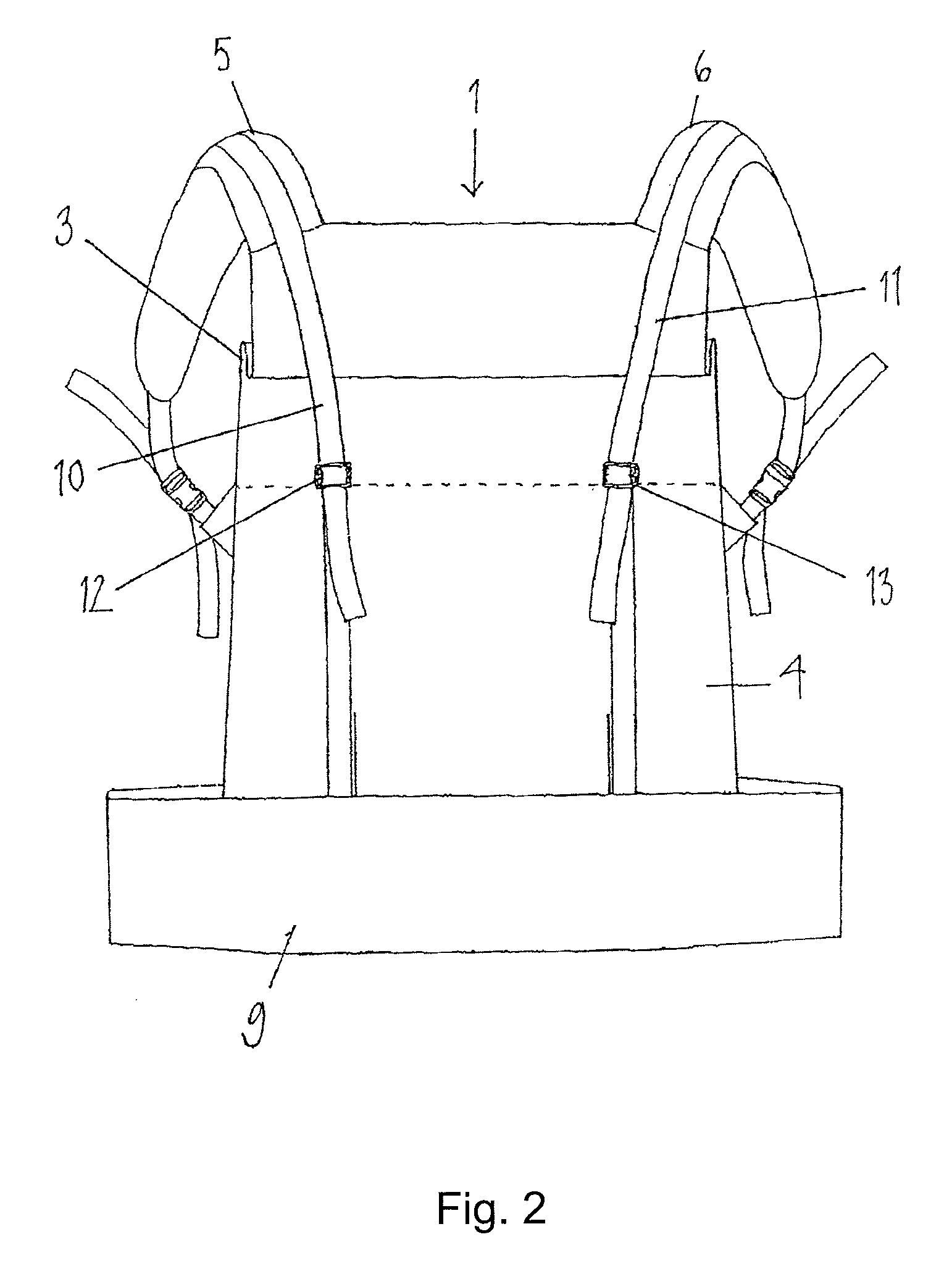Arrangement for adjusting the length of a carrying section of a child carrier
a technology for child carriers and carrying sections, which is applied in the field of arrangement for adjusting the length of the carrying section of the child carrier, can solve the problems of adding to the fabric layers of the carrier, too high for small babies and too low for larger children, and the carrier that is suitable for a twelve-month-old is not suitable for ergonomic carrying of a small baby or a larger child, etc., so as to achieve the effect of easy lengthening and shortening the back part of the carrying
- Summary
- Abstract
- Description
- Claims
- Application Information
AI Technical Summary
Benefits of technology
Problems solved by technology
Method used
Image
Examples
Embodiment Construction
[0025]FIG. 1 presents a child carrier 1 according to the invention, viewed from the backside of the carrier, i.e. from the outside towards the wearer, with the carrier hanging freely open. In this case the carrier would be positioned between the viewer and the wearer of the carrier. The carrier 1 comprises among other things of a carrying section 2 with an essentially vertical back part and a bum support part, upper support elements 5 and 6, such as upper shoulder straps placed on the wearer's shoulders, i.e. carrying straps. In addition, the carrier 1 has at least lower support elements to be adjusted around the wearer's body, which lower support elements consist for example of a hip belt 9 or for example of lower straps 7 and 8 presented in FIG. 10, or for example of both a hip belt 9 and lower straps 7 and 8.
[0026]The carrying section 2 in between the upper support elements 5, 6 and lower support elements 7, 8 or 9 can be realized in various ways, somewhat formed e.g. into a shap...
PUM
 Login to View More
Login to View More Abstract
Description
Claims
Application Information
 Login to View More
Login to View More - R&D
- Intellectual Property
- Life Sciences
- Materials
- Tech Scout
- Unparalleled Data Quality
- Higher Quality Content
- 60% Fewer Hallucinations
Browse by: Latest US Patents, China's latest patents, Technical Efficacy Thesaurus, Application Domain, Technology Topic, Popular Technical Reports.
© 2025 PatSnap. All rights reserved.Legal|Privacy policy|Modern Slavery Act Transparency Statement|Sitemap|About US| Contact US: help@patsnap.com



